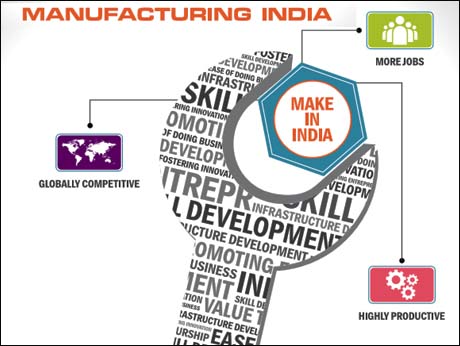
New Delhi, July 31 2016: Analysts and knowledge provider Dun & Bradstreet, has released the 2nd edition of its publication 'ManufacturingIndia 2025', in Delhi recently. Amitabh Kant, CEO, NITI Aayog, presided over the publication release.
We bring you the executive summary of the report-- and a link to accessthe full report.
While global growth remains subdued, the Indian economy is gradually gaining pace led by the inherent strong fundamentals of the economy. However, India has great potential to grow further. The series of small yet important reform measures announced by the new government at the centre, improved business environment through simplifying processes, thrust on infrastructure development, focus towards decentralized planning and greater empowerment of states would help India to reach its true growth potential. To achieve a manufacturing-led transformation, the Government has launched the ‘Make in India’ Programme to provide conducive environment for manufacturing sector in India and develop it as an attractive hub for manufacturing. Along with ‘Make in India’ Programme, other initiatives like Digital India, Skill India, Start-up India, developing Smart Cities and Rurbanisation if implemented conscientiously and accountably will change the dynamics of Indian economy in next decade.
In this publication, Dun & Bradstreet has evaluated the growth prospects of the overall economy and identified key enablers of manufacturing growth. The report outlines the current macroeconomic scenario, provides insights about future manufacturing technologies, compares the enablers of Indian manufacturing with its global counterparts and also lists down key constraints that could pose downside risks to India’s growth prospects. The highlights:
• The Indian economy is expected to gather pace by FY17. India’s Gross Value Added ( GVA) is expected to witness a healthy growth rate of an average of around 7.8% during FY17-FY20, beyond which its growth rate is expected to accelerate to around 8.2% during FY21-FY25. Given its strong domestic fundamentals, India is expected to realize its potential and achieve an average growth rate of around 7.9% during the next decade (FY16-FY25).
• Growth in the industrial sector is expected to revive in the coming decade. With recovery in the industrial activity, share of industrial sector in overall GVA is expected to increase from 31.2% in FY15 to 34.1% in FY25.
• The share of services sector in GVA is expected to be 56% by FY25, while the share of the agriculture sector in GVA is expected to decline from 16.3% in FY15 to 9.9% by FY25.
• India’s manufacturing sector is expected to gain momentum in the coming years and grow at an average rate of 12.2% till FY25. With the revival in the manufacturing activity, the share of manufacturing sector in overall GVA is expected to increase from 17.1% in FY15 to 24.7% in FY25.
• The ‘Make in India’ initiative, improvement in business environment, implementation of critical reforms in the areas of land, labour and taxation, focus on skill development and macro-economic stability are expected to be the key factors that would provide fillip to the Indian manufacturing sector. • In order to achieve the target of 25% share of manufacturing in GDP by 2025, D&B expects the manufacturing investment to grow from around US$ 109 bn in FY14 to US$ 490 bn in FY25.
• D&B evaluated the growth and status of 6 major industrial sectors by 2025; the share of 6 major industrial sectors in India’s economy i.e. Mining, Metals, Machinery & Equipment, Chemical & Pharma, Textile & Leather and Food processing is expected to grow from around 17% in FY14 to approximately 23% by FY25.
Click Here to download your e-Copy of the publication
• D&B covers broad advanced-technology-based processes manufacturing which are impacting the current manufacturing processes in India and are likely to be imbibed by the Indian manufacturers at large in the future. These future manufacturing technologies include Internet of Things, Additive Manufacturing, Robotics Manufacturing, Nanomanufacturing and Biomanufacturing.
• In view of various initiatives taken by the government, a significant pick-up in infrastructure investment can be expected in the coming years. According to D&B estimates, physical infrastructure investment is expected to surge to 10.2% of GDP by FY25 from around 7.5% (E) of GDP in FY15.
• While physical infrastructure is expected to play a vital role in India’s journey towards higher growth in the coming few years, improvement in social infrastructure will help the country to move towards inclusive growth. The goal of raising the share of manufacturing to 25% of GVA would require conducive business environment, efficient business processes, investment to support innovation, capital and labour efficiency, shift from low value added sectors towards high value added sectors, presence of supporting industries along with continued policy thrust amongst other measures. Besides improvement in physical infrastructure, strong supply chain and logistics, focus on health and skill development are required which will not only facilitate the growth of the manufacturing sector but will also push India on a high and sustainable growth trajectory in the coming years.
Click Here to download an e-Copy of the publication